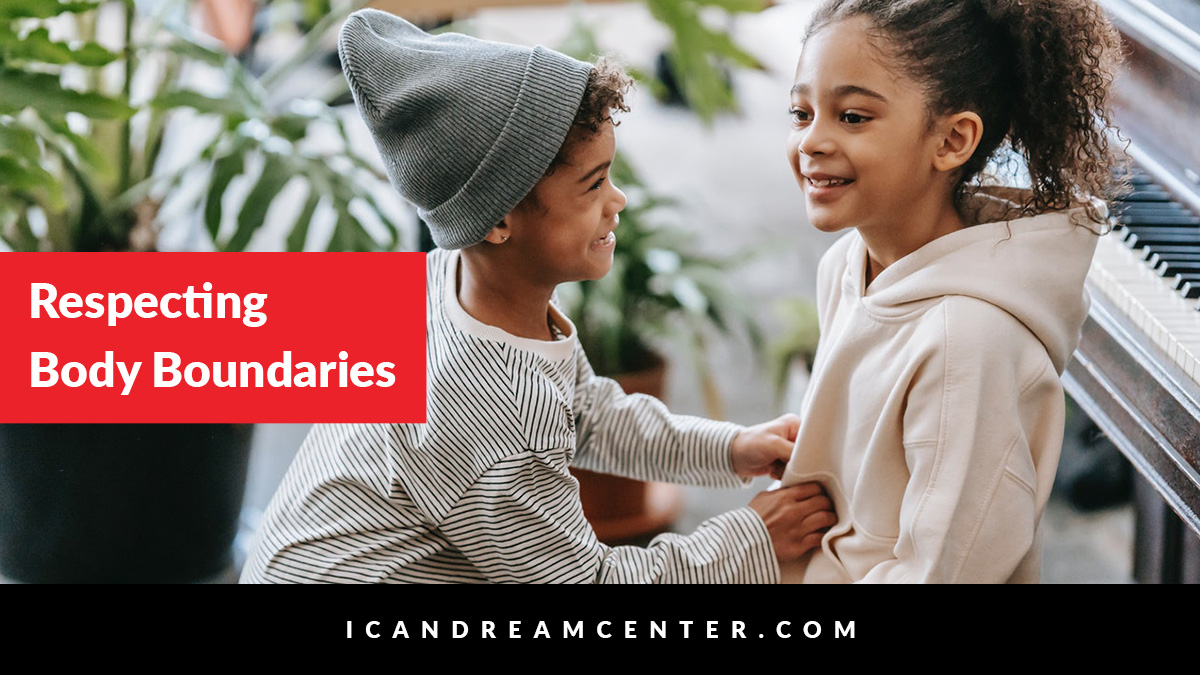
Respecting Body Boundaries
There are various boundaries to practice when setting limits, and one youth should practice is body boundaries. Boll & Müller (2020) explain body boundaries can be practiced in various ways by creating a set of rules to maintain body safety and comfortability like touches or commenting on one’s body.
When it comes to boundaries, Sanders (2018) states teaching young children about body boundaries, both theirs and others’, are crucial to a child’s growing sense of self, their confidence, and how they should expect to be treated by others.
Parents and other caregivers have essential roles in children’s lives to build healthy relationships and teach body boundaries through modeling their boundaries and respecting children’s.
Personal space is an excellent way to develop a sense of self. A way to practice personal space is by teaching children to close the door when they are in the bathroom or bedroom when they are getting dressed.
Another way is practicing the amount of space between two people by creating an invisible bubble or using arms to determine physical distance.
Furthermore, when practicing personal space, children can decide who and when is appropriate for someone to be in their personal space.
When modeling and respecting children’s boundaries, it’s important to accept when they say no because No means No.
When visiting family members, adults often instruct children to give a hug and kiss to say hello, or it’s considered disrespectful if a child says no. To respect children’s boundaries and encourage empowerment, an adult can ask the child how they would like to say hello or allow them to say hello when they’re ready.
It’s a must to consider children’s feelings when dealing with the say of their bodies. Sanders (2015) explains from a very young age, children should be taught to have a clear, strong voice regarding their rights, especially about their bodies, to have the confidence to speak up when they are unhappy or feel uncomfortable in any situation.
Along with modeling boundaries, storytelling is an excellent source for practicing body boundaries for children and others. Jayneen Sanders has a variety of books to create discussions on respecting body boundaries, such as No Means No! and Let’s Talk About Body Boundaries, Consent & Respect. These books provide scenarios of situations youth may encounter in their everyday lives to practice setting limits and to respect others. Also, both books have discussion questions for parents, caregivers, and educators to increase understanding, recognize emotions, choices, and bullying behaviors to empower youth.
References:
Boll, Tobias; Müller, Sophie Merit. (2020) Body Boundary Work: Praxeological Thoughts on Personal Corporality. Human Studies (43) (4)
Sanders, Jayneen. No Means No!. Educate to Empower Publishing; Illustrated edition, 2015
Sanders, Jayneen. Let’s Talk About Body Boundaries, Consent & Respect. Educate to Empower Publishing; Illustrated edition, 2018
